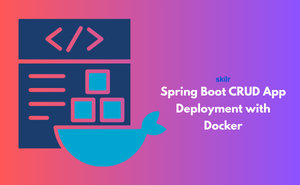👇 CELEBRATE CLOUD SECURITY DAY 👇
00
HOURS
00
MINUTES
00
SECONDS

When developers create applications with Spring Boot, they often need to perform basic tasks like saving, viewing, editing, or removing data. These are called CRUD operations, and Spring Boot makes them simple to implement. But building the app is just the first step—deploying it smoothly is equally important. That’s where Docker comes in.
Docker allows developers to package the entire Spring Boot app with its settings, libraries, and dependencies into a container. This container can then run anywhere, making deployment faster, reliable, and less error-prone. Together, Spring Boot and Docker provide a powerful combination for developing and delivering applications in a professional and scalable way.
This exam is ideal for:
Industry-endorsed certificates to strengthen your career profile.
Start learning immediately with digital materials, no delays.
Practice until you’re fully confident, at no additional charge.
Study anytime, anywhere, on laptop, tablet, or smartphone.
Courses and practice exams developed by qualified professionals.
Support available round the clock whenever you need help.
Easy-to-follow content with practice exams and assessments.
Join a global community of professionals advancing their skills.
Absolutely, apps can run on AWS, Azure, GCP, or any container-friendly platform.
Yes, it simplifies Java development by reducing boilerplate code.
Yes, PostgreSQL, MongoDB, and other databases can be used.
Yes, multi-container management with Docker Compose is included.
It equips them with skills to containerize and deploy apps reliably.
Docker ensures consistency, portability, and easy scaling of applications.
Yes, building and exposing APIs is part of CRUD app development.
Java developers, backend engineers, and DevOps professionals who want to master app deployment.
Yes, basic to intermediate Java knowledge is required.
CRUD stands for Create, Read, Update, and Delete—basic database operations.